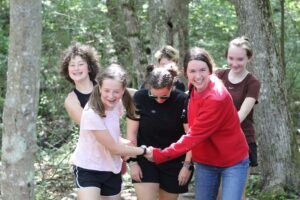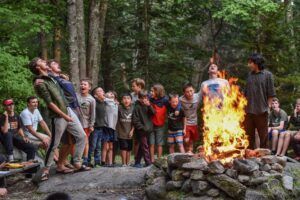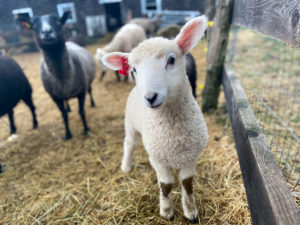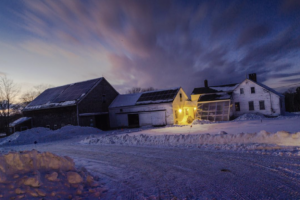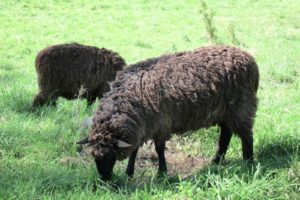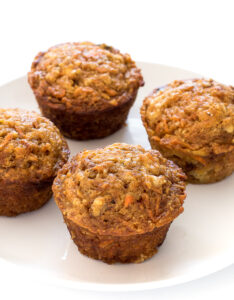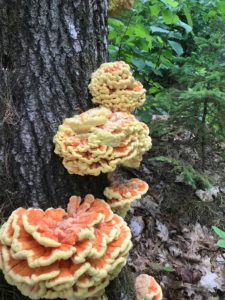We harvested the farm’s garlic this past week with boys campers, a fun and fragrant experience. Once harvested, the farm crew divided the garlic into three groups:
- The largest bulbs (roughly one-quarter of the harvest, or 600 bulbs) are hanging in the barn to cure. This fall, we’ll break the garlic heads down into their component cloves and plant them out in the field to overwinter in the ground under mulch. They will be some of the first plants to peek out of the ground next spring. The garlic plant that grows will be a clone of the parent plant that produced the seed.
- The next largest bulbs (the next one-quarter of the harvest) are also curing in the barn, these destined for storage in our root cellar. The kitchen crew and fall semester students may peel them en masse during work programs this fall using this highly enjoyable but significantly loud trick.
- The last half – the smallest bulbs in the bunch – were set aside to peel immediately with campers. On some of the hottest afternoons of the past week, we eschewed the scorching heat of the gardens and gathered in circles in the (relative) cool of the barn’s workshop to peel this garlic, telling stories as we worked. Just yesterday, the farm crew processed these garlic cloves in oil and filled 39 quart-sized plastic bags with garlic puree for the kitchen to defrost and use as needed over the next year. Though garlic stores well in bulb form in the cool/dry room of the root cellar, this puree is a simple and deliciously quick way for the kitchen to season meals.
Garlic harvest complete, there’s really very little left to do on the farm this time of year. Just kidding! I’m off to potato beetle squishing, harvesting for wilderness trip resupplies, some pasture back-clipping, and a fair share of weeding.
One more garlic tidbit I picked up from a cookbook some years ago: if your fingers smell like garlic at the end of processing or cooking, rub your fingers on a stainless steel spoon as you wash your hands. The smell will disappear. Magic!
